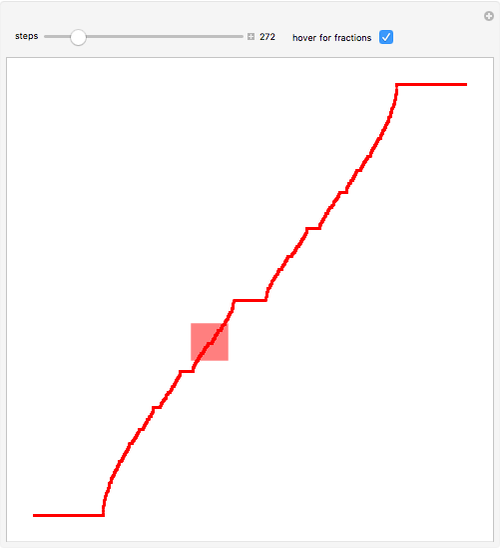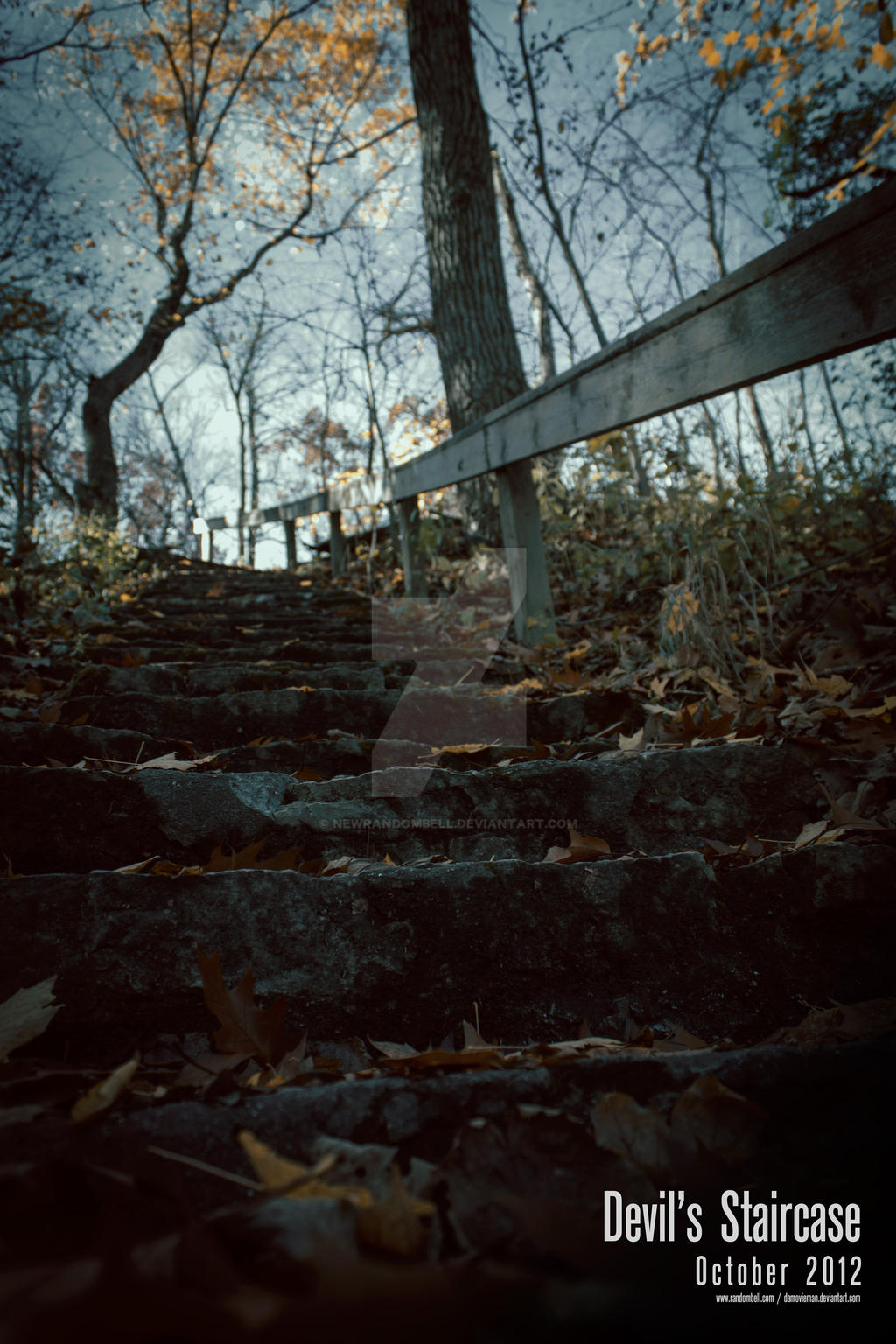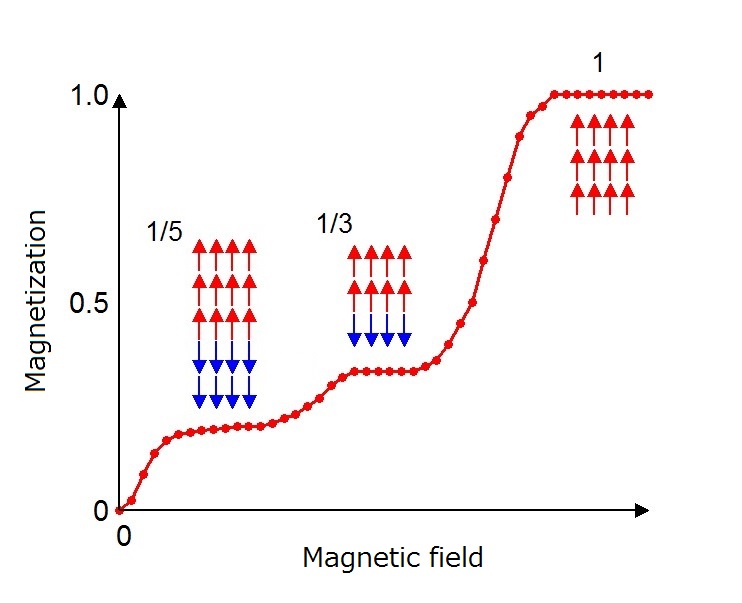Devil S Staircase Math
Devil S Staircase Math - The first stage of the construction is to subdivide [0,1] into thirds and remove the interior of the middle third; Define s ∞ = ⋃ n = 1 ∞ s n {\displaystyle s_{\infty }=\bigcup _{n=1}^{\infty }s_{n}}. • if [x] 3 contains any 1s, with the first 1 being at position n: Consider the closed interval [0,1]. The result is a monotonic increasing staircase for which the simplest rational numbers have the largest steps. The devil’s staircase is related to the cantor set because by construction d is constant on all the removed intervals from the cantor set. The graph of the devil’s staircase. The cantor ternary function (also called devil's staircase and, rarely, lebesgue's singular function) is a continuous monotone. Call the nth staircase function. [x] 3 = 0.x 1x 2.x n−11x n+1., replace the.
Consider the closed interval [0,1]. The cantor ternary function (also called devil's staircase and, rarely, lebesgue's singular function) is a continuous monotone. Define s ∞ = ⋃ n = 1 ∞ s n {\displaystyle s_{\infty }=\bigcup _{n=1}^{\infty }s_{n}}. • if [x] 3 contains any 1s, with the first 1 being at position n: The devil’s staircase is related to the cantor set because by construction d is constant on all the removed intervals from the cantor set. The result is a monotonic increasing staircase for which the simplest rational numbers have the largest steps. The first stage of the construction is to subdivide [0,1] into thirds and remove the interior of the middle third; [x] 3 = 0.x 1x 2.x n−11x n+1., replace the. The graph of the devil’s staircase. Call the nth staircase function.
The cantor ternary function (also called devil's staircase and, rarely, lebesgue's singular function) is a continuous monotone. Consider the closed interval [0,1]. The first stage of the construction is to subdivide [0,1] into thirds and remove the interior of the middle third; The result is a monotonic increasing staircase for which the simplest rational numbers have the largest steps. • if [x] 3 contains any 1s, with the first 1 being at position n: The devil’s staircase is related to the cantor set because by construction d is constant on all the removed intervals from the cantor set. [x] 3 = 0.x 1x 2.x n−11x n+1., replace the. Define s ∞ = ⋃ n = 1 ∞ s n {\displaystyle s_{\infty }=\bigcup _{n=1}^{\infty }s_{n}}. The graph of the devil’s staircase. Call the nth staircase function.
Staircase Math
The devil’s staircase is related to the cantor set because by construction d is constant on all the removed intervals from the cantor set. The graph of the devil’s staircase. Define s ∞ = ⋃ n = 1 ∞ s n {\displaystyle s_{\infty }=\bigcup _{n=1}^{\infty }s_{n}}. Call the nth staircase function. Consider the closed interval [0,1].
Devil's Staircase by dashedandshattered on DeviantArt
Call the nth staircase function. Define s ∞ = ⋃ n = 1 ∞ s n {\displaystyle s_{\infty }=\bigcup _{n=1}^{\infty }s_{n}}. [x] 3 = 0.x 1x 2.x n−11x n+1., replace the. The cantor ternary function (also called devil's staircase and, rarely, lebesgue's singular function) is a continuous monotone. The devil’s staircase is related to the cantor set because by construction.
Devil's Staircase Wolfram Demonstrations Project
Define s ∞ = ⋃ n = 1 ∞ s n {\displaystyle s_{\infty }=\bigcup _{n=1}^{\infty }s_{n}}. The first stage of the construction is to subdivide [0,1] into thirds and remove the interior of the middle third; [x] 3 = 0.x 1x 2.x n−11x n+1., replace the. • if [x] 3 contains any 1s, with the first 1 being at position.
Devil's Staircase by NewRandombell on DeviantArt
• if [x] 3 contains any 1s, with the first 1 being at position n: Consider the closed interval [0,1]. Call the nth staircase function. The result is a monotonic increasing staircase for which the simplest rational numbers have the largest steps. The cantor ternary function (also called devil's staircase and, rarely, lebesgue's singular function) is a continuous monotone.
The Devil's Staircase science and math behind the music
The graph of the devil’s staircase. The first stage of the construction is to subdivide [0,1] into thirds and remove the interior of the middle third; Define s ∞ = ⋃ n = 1 ∞ s n {\displaystyle s_{\infty }=\bigcup _{n=1}^{\infty }s_{n}}. [x] 3 = 0.x 1x 2.x n−11x n+1., replace the. The result is a monotonic increasing staircase for.
Emergence of "Devil's staircase" Innovations Report
Consider the closed interval [0,1]. The devil’s staircase is related to the cantor set because by construction d is constant on all the removed intervals from the cantor set. The result is a monotonic increasing staircase for which the simplest rational numbers have the largest steps. The first stage of the construction is to subdivide [0,1] into thirds and remove.
Devil's Staircase Continuous Function Derivative
The first stage of the construction is to subdivide [0,1] into thirds and remove the interior of the middle third; • if [x] 3 contains any 1s, with the first 1 being at position n: The devil’s staircase is related to the cantor set because by construction d is constant on all the removed intervals from the cantor set. The.
Devil’s Staircase Math Fun Facts
• if [x] 3 contains any 1s, with the first 1 being at position n: The devil’s staircase is related to the cantor set because by construction d is constant on all the removed intervals from the cantor set. Define s ∞ = ⋃ n = 1 ∞ s n {\displaystyle s_{\infty }=\bigcup _{n=1}^{\infty }s_{n}}. The graph of the devil’s.
Devil's Staircase by RawPoetry on DeviantArt
• if [x] 3 contains any 1s, with the first 1 being at position n: The first stage of the construction is to subdivide [0,1] into thirds and remove the interior of the middle third; Call the nth staircase function. Consider the closed interval [0,1]. The cantor ternary function (also called devil's staircase and, rarely, lebesgue's singular function) is a.
Devil's Staircase by PeterI on DeviantArt
The result is a monotonic increasing staircase for which the simplest rational numbers have the largest steps. • if [x] 3 contains any 1s, with the first 1 being at position n: The first stage of the construction is to subdivide [0,1] into thirds and remove the interior of the middle third; The devil’s staircase is related to the cantor.
[X] 3 = 0.X 1X 2.X N−11X N+1., Replace The.
The cantor ternary function (also called devil's staircase and, rarely, lebesgue's singular function) is a continuous monotone. • if [x] 3 contains any 1s, with the first 1 being at position n: The devil’s staircase is related to the cantor set because by construction d is constant on all the removed intervals from the cantor set. Consider the closed interval [0,1].
Define S ∞ = ⋃ N = 1 ∞ S N {\Displaystyle S_{\Infty }=\Bigcup _{N=1}^{\Infty }S_{N}}.
The graph of the devil’s staircase. The result is a monotonic increasing staircase for which the simplest rational numbers have the largest steps. The first stage of the construction is to subdivide [0,1] into thirds and remove the interior of the middle third; Call the nth staircase function.









